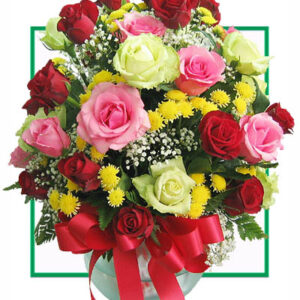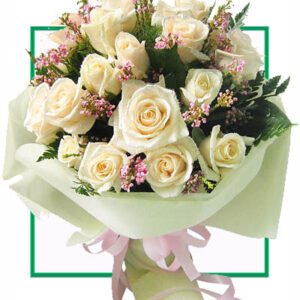Silver Jubilee Government College is located in B- Camp, Kurnool, Andhra Pradesh, India. It was established on the occasion of Silver Jubilee Celebrations of independence India. It was established in 1972 by the government of Andhra Pradesh. Only male students from Andhra Pradesh are admitted after passing an entrance test. It was the brain child of Sri. P.V. Narasimha Rao, the then Chief Minister of Andhra Pradesh and Sri M. V. Rajagopal, I.A.S., the then Director and Secretary of Education, government of Andhra Pradesh. With the background of separatist movements, they had a dream of establishing a state wide educational institution to promote regional reconciliation, by admitting students from all the three regions of the state, the coastal Andhra, Telangana and Rayalaseema. They wanted to provide an atmosphere free from financial worries by providing free boarding, free lodging and free coaching. Their dream materialized and took shape in the form of Silver Jubilee Government College, a residential degree college, located in Kurnool, the first capital of Andhra Pradesh. The students were admitted from all the three regions of the state, coastal Andhra, Telangana and Rayalaseema in the ratio of 42:36:22, on merit basis through a state wide entrance test . The University Grants Commission, New Delhi, conferred Autonomy in 2005. The National Accreditation and Assessment Council, Bangalore, has examined the academic and infra-structural facilities and awarded an “A” grade. The college has introduced vocational courses like Industrial Chemistry, Pharmaceutical Chemistry, Microbiology, Biochemistry, Computer science, and Travel and Tourism. Postgraduate courses in English, Telugu and Physics, Chemistry, Mathematics and Economics have been started. Jawahar Knowledge Centre train the students in communication skills, spoken English and software basics.
G Pulla Reddy College of Engineering & Technology established in 1985 is one of the oldest private engineering colleges in the region.Rajeev Gandhi Memorial College of Engineering and Technology, established in 1995, is located in a 50 acres site at Nerawada cross roads, 10 km from Nandyal town on the way to kurnool on NH-18. In addition, Kurnool has a dental College, two Polytechnics, Sri Krishnadevaraya University Post Graduate Center, Govt. Pharmacy College, CES College of Pharmacy(CESCOP), degree colleges for men and women, M.B.A. college, M.C.A. colleges, four colleges of Education (B.Ed) and a law college. Government of Andhra Pradesh established the first residential degree college “Silver Jubilee College” in 1972 at Kurnool. In addition to ‘G Pulla Reddy Engineering College and ‘Brindavan Institute of Technology and Science'(BITS),’ and a new university is established in Kurnool City named “Rayalaseema University”.
Kurnool is considered as the Gateway of Rayalaseema as one must pass through Kurnool to reach Kadapa or Chittor or Anantapur districts while travelling from Hyderabad. Kurnool is having the third largest bus station in Andhra Pradesh after Hyderabad and Vijayawada. Kurnool is connected to most cities and towns in Andhra Pradesh as well as to Bengaluru and Chennai by the Andhra Pradesh State Road Transport Corporation (APSRTC) and the Karnataka State Road Transport Corporation (KSRTC). National Highway 7 connects Kurnool to Hyderabad (210 km, 4.5 hours), Anantapur (140 km, three hours), Hindupur {245 km, 5.5 hours} and Bengaluru (360 km. The State Highway 51 connects to Srisailam, Vinukonda, Guntur, Vijayawada. The National Highway 18 Kurnool-Chittoor connects the city to Panyam, Nandyal,Allagadda Allagadda,Ahobilam(near to the highway),Mahanandi(near to the highway),Maidukuru, Kadapa, Rayachoty Pileru, and Chittoor.
When Andhra State was formed in October 1953, the Government of Andhra decided to start a medical college in the Rayalaseema region of the state. In Government Order Ms. No. 1835, Health, dated 29 November 1955, the government of Andhra passed orders to establish a medical college, the third one in the state, at Kurnool. As the building was not ready for the college the government decided to admit 50 students intended for Kurnool Medical College at Kurnool City in July 1956. When Andhra Pradesh was formed and the capital was shifted to Hyderabad from Kurnool the erstwhile secretariat building was handed over to the medical college. The college was opened on 21 July 1956 by Sri T.T. Krishnamachari, the then Finance Minister of India. Fifty students were admitted to the M.B.B.S. course.
There is a bastion named Konda Reddy fort, constructed as a strategic watch tower by the rulers of the Vijayanagara Empire. Underneath lies a passage (tunnel) which connects the fort to Gadwal which is 52 km away. The specialty of this tunnel is it crosses under the river Tungabhadra and reaches gadwal which was ruled by Nalla Somanadri who was the one built an ecxellent fort in gadwal . Stories tell that the ruler of Gadwal Kingdom utilized this tunnel to escape from the Muslim conquerors in 17th century. The government of Andhra Pradesh closed the tunnel somewhere around the 1901.
The legislators’ hostel, which was very close to, the college was given for locating the men’s hostel during 1958 and it accommodated 175 students. Further expansion of this hostel was made to accommodate 350 students in all. During December 2006 and January 2007 students and faculty of this college were celebrating their Golden jubilee function. It marked the completion of 50 successful years after establishment. They invited Dr. Abdul Kalam, former President of India to this program. Permission to set up Rayalaseema University was granted by the University Grants Commission (UGC).
There are many theories about the origin of the name Kurnool. According to A Manual of the Kurnool District in the Presidency of Madras, the name Kurnool is derived from Kandenavolu or Kandanavolu (a Telugu name by which it is referred to in the inscriptions and literature of the past), pronounced as karnooluu. The site on which the city now stands was a resting place before crossing the Tungabhadra river to Alampur, during the time of Chalukya’s. Here, they greased their cart-wheels with oil. They called the place Kandenametta or kandanavolu (Kandanam means grease).
Aurangazeb, the last Mogul King to rule India, conquered the Deccan in 1687 and left his governors, the Nizams, to rule the Andhra centres of Hyderabad and Kurnool. Both the Nizam of Hyderabad and Nawab of Kurnool declared independence and became sole rulers of their territories. Nawab Alaf Khan Bahadur was the first ruler of Kurnool and his descendants ruled it for over 200 years. In the early 18th century, the Nawabs joined hands with the sultan of Mysore and fought the British Empire.
The four railway stations in Kurnool District are Kurnool Town, Adoni, Nandyal and Dhone junction. Adoni is on the Chennai-Mumbai Railway Line and several trains run daily to these cities and New Delhi. Nandyal is on the Guntakal -Vijayawada line and has daily trains to Hyderabad, Vijayawada, Bengaluru, Vishakhapatnam and Howrah. Dhone junction is situated on the Guntakal – Secunderabad / Vijayawada line. All the trains which pass through Nandyal and Kurnool pass through this junction.
It is the headquarters of the mandal, the revenue division and the district of the same name. From 1 October 1953 to 31 October 1956, Kurnool was also the capital of Andhra State (not Andhra Pradesh), which was carved out of Madras State in 1953. Tangutoori Prakasam Pantulu was the chief minister of Andhra State during this period. The present day District court buildings were used as premises of state Assembly
The strategic position led to the formation of a small settlement on the spot which subsequently came to be known as Kandenapalli, Kandenolu and Kandenavolu, the city of Kandena or grease. The site which was used as a halting place is still known as Bandla Metta (Bandla means carts and Metta means headquarters or halting place). There is a street in the Old city known as “Bandimetta”.
Some scholars argue that Kurnool derived its name from Kallu which means stone and Nadu which means territory. Yet, others say the name Kurnool has been derived from Skandanavolu, the city of Skanda or Kumaraswamy. The worship of Skanda in Andhra Pradesh dates back to ancient times. The cities were also named after Skanda, the chief God of War of the Devas.
Hamlet’s existed around Kurnool for more than 2,000 years. The Chinese traveller Xuanzang, on his way to Kanchi, passed through Kurnool. In the seventeenth century, Kurnool was part of the sultanate of Bijapur, under the governorship of a hereditary line of jagirdars of African origin, who were among the most powerful nobles at the court.
The Ketavaram rock painting’s are dated back to the Paleolithic era (located at a distance of 18 Kilometer from Kurnool). Also the Jurreru Valley, Katavani Kunta and Yaganti in Kurnool District have some important rock art’s and painting’s in their vicinity, may be dated back to 35,000 to 40,000 years ago.
Despite being the largest of all the 4 districts of Rayalaseema, it still remains the backward region of Andhra Pradesh. The other 3 districts are Anantapur, Kadapa and Chittoor. This region flourished in the past under the Hindu King Sri Krishnadevaraya. Hence the name Rayalaseema.
Kurnool lies on the Hyderabad – Guntakal railway line and has express trains to Hyderabad, Delhi, Chennai, Chittoor, Tirupati, Jaipur, Madurai, Shirdi and Bengaluru. There are also passenger trains to Hyderabad, Guntakal and Guntur, which caters to the short distance passengers.
Kurnool lies on the banks of the Tungabhadra River. The Hundri and Neeva rivers also flow through the city. The K.C. Canal (Kurnool–Cuddapah) was built by the Dutch for transportation, but later used for irrigation.
Kurnool is a city and administrative seat of Kurnool district of Andhra Pradesh state in southern India, about 212 kilometres (132 mi) south of state capital, Hyderabad.
As per provisional data of 2011 census, Kurnool urban agglomeration had a population of 478,124, out of which males were 239,401 and females were 238,723. The literacy rate was 77.37 per cent. ref>
The climate is tropical with temperatures ranging from 26°C to 45°C in the summer and 12°C to 31°C in the winter. The average annual rainfall is about 30 inches (762 mm).
Send Flowers to Kurnool
CopyRights © 2024 Glowyflowers.com. (SV Mobile Teleshoppe Private Limited.)All Rights Reserved
Product has been added to your cart











































































































































































